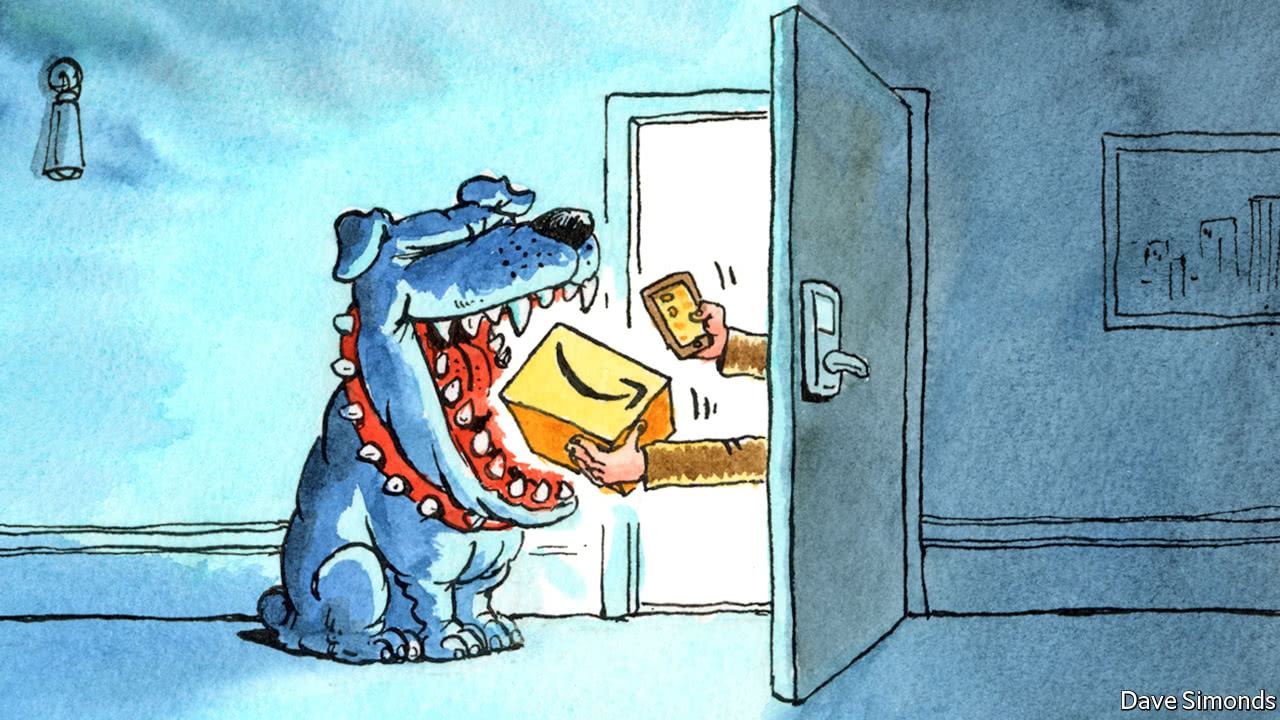
AFTER staying at home one afternoon for a delivery of discounted toilet disinfectant that never came, Valentin Romanov, a Stockholm IT manager, installed a special lock on his flat’s entrance. When no one is in, deliverymen unlock the door and slip packages inside. Four months on, Mr Romanov has doubled his spending online and says he cannot imagine life without in-home deliveries. These are sweet words for delivery firms and online retailers, Amazon included, that are setting up partnerships with lock manufacturers to overcome a big hurdle for e-commerce.
Conventional deliveries fail so often that a parcel is driven to a home an average of 1.5 times in the Nordic region, says Kenneth Verlage, head of business development at PostNord, a logistics giant operating in Denmark, Finland, Norway and Sweden. It is an expensive inefficiency made worse, he says, by the fact that recipients have still often had to wait for a failed delivery. Some couriers leave packages on doorsteps, but this invites theft. Of 1,000 Americans surveyed this year by Shorr, a packaging firm, nearly a third had been victims of “porch piracy”, as this is known. Two-fifths avoid certain online purchases for fear of it.
-
Nationalism: further reading
-
The Economist’s playlist of national anthems
-
Foreign reserves
-
The Las Vegas Golden Knights are hitting hockey’s jackpot
-
Ryanair stops Christmas strikes, but at a cost
-
At 50, “The Graduate” still has much to say about youth
A number of firms now sell wirelessly connected locks which a courier’s delivery staff can open using a passcode or smartphone app after the resident has issued a temporary authorisation, before leaving home or remotely. Deliveries are filmed with an indoor security camera paired with the lock. The short videos are sent to parcel addressees and typically end, comically in Mr Romanov’s view, with a jiggle of the door handle from outside to show that the departing delivery person has locked up.
Amazon began offering in-home deliveries in 37 American cities in November. Shoppers who have had a special lock and camera installed (costing $199) can select in-home delivery at checkout. Like most firms offering the service, Amazon is tightlipped about user numbers. The boss of August Home, a San Francisco maker of in-home delivery locks, says that already hundreds of thousands of delivery drivers, dog-walkers, cleaners and Airbnb guests use its app keylessly to enter others’ homes.
Offerings are multiplying. In 2018 August Home will go to Australia and Britain, and PostNord will launch in-home delivery in four Nordic countries. Walmart and Sears have tried it; Sears even tested unattended appliance repairs. Five logistics firms and two Swedish supermarket chains are trying or using locks from Glue, a firm based in Stockholm, for in-home deliveries.
Sceptics reckon these efforts will not amount to much. Plenty of consumers will be fearful about theft. Rhino Security Labs, a Seattle computer-security firm, claims it hacked into and shut off the video in one Amazon lock-and-camera system. In-home deliveries are incompatible with burglar alarms. And what if an improperly fenced-off dog or cat slips outside? Or an heirloom on display gets knocked over? These are tricky questions. But e-commerce firms have unlocked harder ones.
Source: economist
An experiment with in-home deliveries is under way